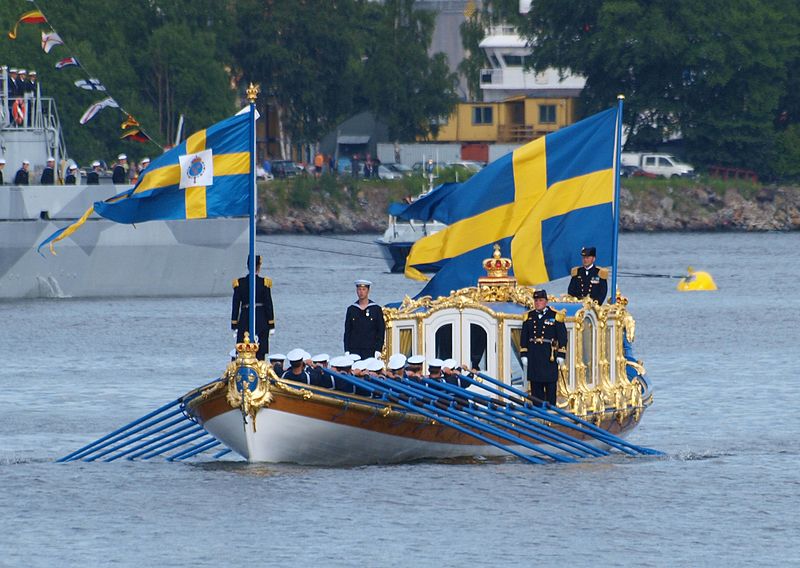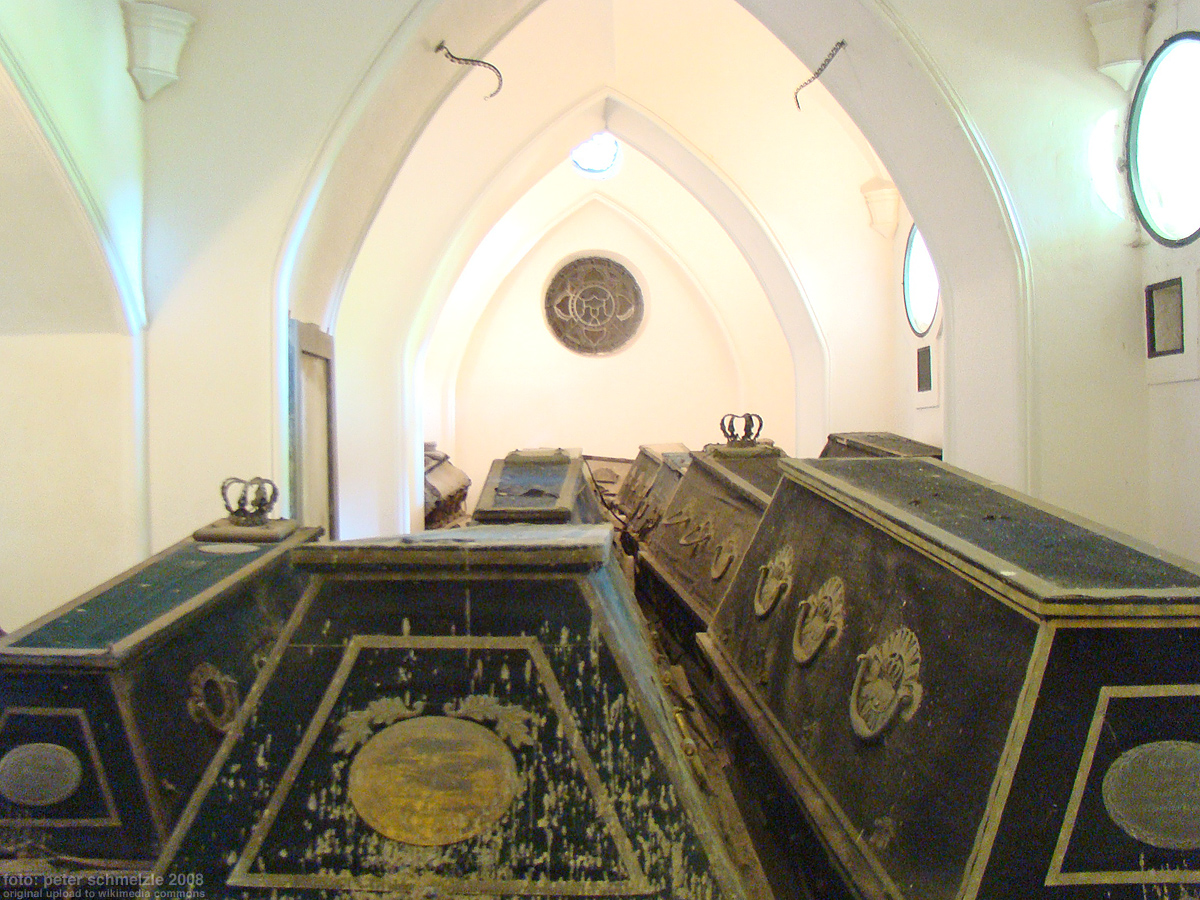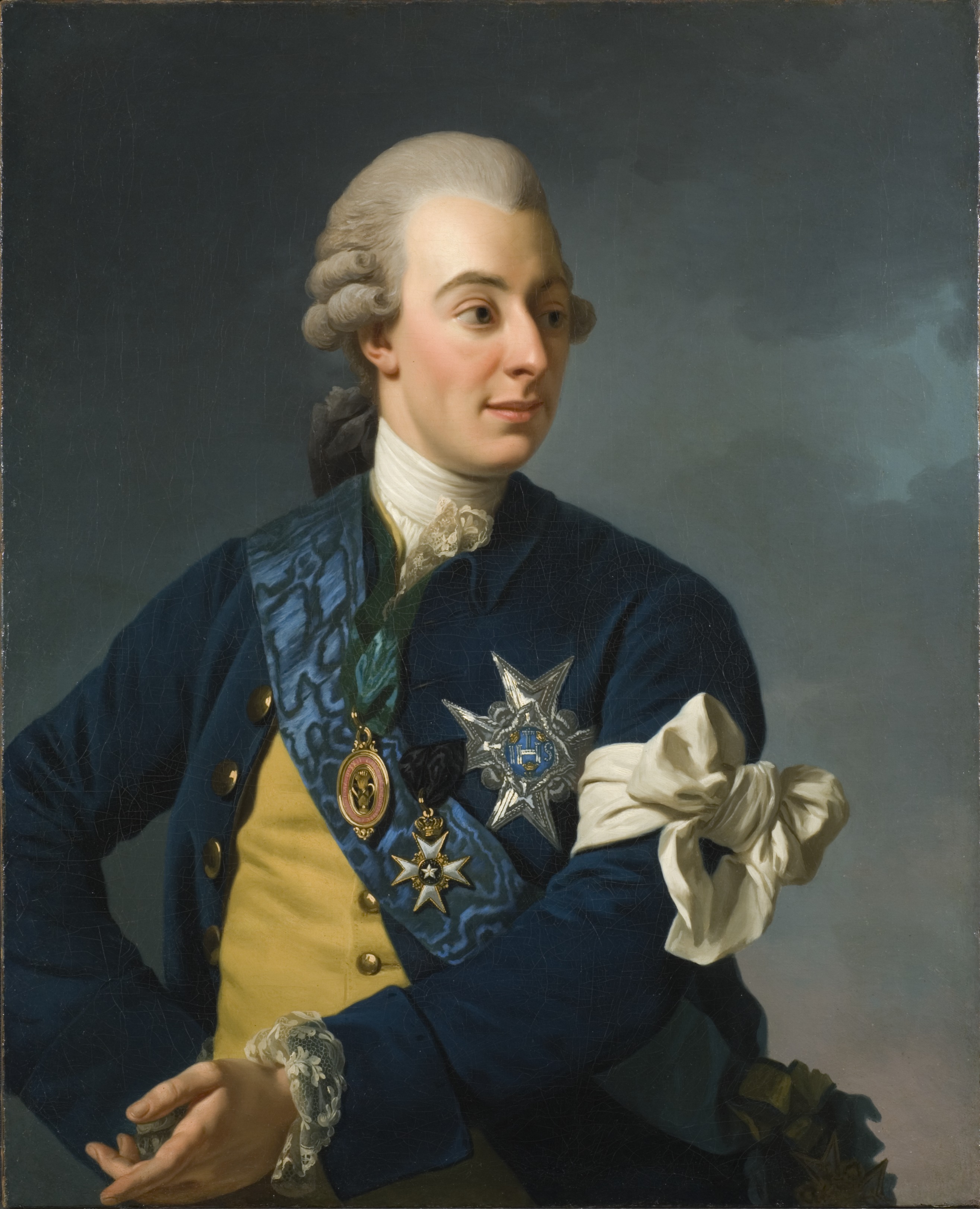by Susan Flantzer © Unofficial Royalty 2018

Hedwig Elizabeth Charlotte of Holstein-Gottorp, Queen of Sweden and Norway; Credit – Wikipedia
Known for her invaluable diary which described the Swedish royal court from 1775-1817, Hedwig Elisabeth Charlotte of Holstein-Gottorp was born on March 22, 1759, in Eutin, Duchy of Oldenburg, now in the German state of Schleswig-Holstein. Her parents were Friedrich August I, Duke of Oldenburg and Princess Ulrike Friederike Wilhelmine of Hesse-Kassel. She was a niece of King Adolf Fredrik of Sweden, the father of her future husband, and like her husband, a first cousin of Empress Catherine II of Russia (the Great).
Hedwig Elisabeth Charlotte had two older siblings. Due to mental illness, her brother was Duke of Oldenburg and then Grand Duke beginning in 1815, in name only. His cousin Peter, Prince-Bishop of Lübeck, was regent throughout his entire reign and succeeded him.
Hedwig Elisabeth Charlotte first met her cousin Prince Carl of Sweden, second son of King Adolf Fredrik of Sweden and Louisa Ulrika of Prussia and brother of King Gustav III of Sweden, when he visited Eutin in 1770. In 1766, King Gustav III married Princess Sophia Magdalena of Denmark. In 1772, the marriage still had not been consummated and Gustav wanted to give the task of providing an heir to his brother. Hedwig Elisabeth Charlotte’s name was mentioned as a possible bride for Carl. The marriage was arranged in 1772, but the wedding was delayed because of the bride’s young age.

Carl of Sweden; Credit – Wikipedia
The couple was married by proxy in Wismar, a German city in the possession of Sweden, on June 22, 1774, with Baron Carl Otto von Höpken standing in for the groom. Hedwig Elisabeth Charlotte traveled to Sweden and arrived on July 1, 1774. On July 7, 1774, she made her entry into Stockholm on the Vasaorden, a kungaslup, Swedish for a ceremonial rowboat, built for King Gustav III in 1744. It was destroyed by fire in 1921 and an exact replica was built in 1923 which was used at the wedding celebrations of Crown Princess Victoria of Sweden and Daniel Westling in 2010.

Ceremonial entry of Hedwig Elisabeth Charlotte into Stockholm by Pehr Hilleström; Credit – Wikipedia

The Vasaorden at the wedding of Crown Princess Victoria in 2010; Photo Credit – Av Atlantic Chef – Eget arbete, CC BY-SA 3.0, https://commons.wikimedia.org/w/index.php?curid=10686218
After her ceremonial arrival in Stockholm, Hedwig Elisabeth Charlotte was formally presented to Queen Sophia Magdalena, Dowager Queen Louisa Ulrika, members of the Council, their wives, and ambassadors. The second wedding took place the same evening at the Royal Chapel in the Royal Palace of Stockholm followed by a masked ball in the Royal Garden.

Wedding dress of Hedwig Elisabeth Charlotte; Credit – Wikipedia
In July 1775, there were signs that Hedwig Elisabeth Charlotte was pregnant. It was hoped that the succession problem would be solved and prayers were held in the churches. In mid-September, preparations were made for the royal birth expected in October. However, on October 24, 1775, it was determined that there was no pregnancy. The news of the false pregnancy made King Gustav III decide to consummate his marriage and provide an heir to the throne himself, the future King Gustav IV Adolf, born in 1778.
Their marriage was distant and both Hedwig Elisabeth Charlotte and Carl had extramarital affairs. From 1783, Hedwig Elisabeth Charlotte had a long-term relationship with Count Carl Piper, referred to as her lover in her diary. Among her other alleged lovers was Count Axel von Fersen, the favorite of Marie Antoinette, Queen of France. Hedwig Elisabeth Charlotte eventually had two children – one stillborn and one who lived only six days. Rumors of Hedwig Elisabeth Charlotte’s alleged affairs were noted during her pregnancy in 1797.
- Lovisa Hedvig (July 2, 1797), stillborn
- Carl Adolf, Duke of Värmland (July 4, 1798 – July 10, 1798), died in early infancy
On March 16, 1792, King Gustav III was shot by Jacob Johan Anckarström during a masked ball at the Royal Opera House in Stockholm. Thirteen days later, on March 29, 1792, King Gustav III died of his wounds at the Royal Palace of Stockholm at the age of 46. His 13-year-old son succeeded him as King Gustav IV Adolf. Hedwig Elisabeth Charlotte’s husband Prince Carl, the young king’s uncle, served as regent until 1796. Carl was unwilling or incapable of managing state affairs and entrusted the powers of government to his confidant Count Gustaf Adolf Reuterholm.
In 1805, King Gustav IV Adolf joined the Third Coalition against Napoleon. His campaign went poorly and the French occupied Swedish Pomerania. In 1807, Russia made peace with France. A year later, Russia invaded Finland, ten ruled by Sweden, attempting to force Gustav Adolf to join Napoleon’s Continental System. In just a few months, almost all of Finland was lost to Russia. In 1809, Sweden surrendered the eastern third of Sweden to Russia, and the autonomous Grand Principality of Finland within the Russian Empire was established.
Provoked by the disaster in Finland, a group of noblemen started a coup d’état that deposed King Gustav IV Adolf. On March 13, 1809, a group of conspirators broke into the royal apartments at Gripsholm Castle and imprisoned Gustav Adolf and his family. Gustav IV Adolf abdicated on March 29, 1809, thinking if he did so, his son would become king. However, on May 10, 1809, the Riksdag proclaimed that all members of Gustav Adolf’s family had forfeited their rights to the throne. After accepting a new liberal constitution, Hedwig Elisabeth Charlotte’s husband Prince Carl was proclaimed King Carl XIII of Sweden on June 6, 1809. In December 1809, King Gustav IV Adolf and his family were sent into exile.

Hedwig Elisabeth Charlotte in 1814; Credit – Wikipedia
After the coup, Hedwig Elisabeth Charlotte stated, “I do not wish to be a Queen!” She had a deep affection for Frederica of Baden, the wife of Gustav IV Adolf, and found it embarrassing to be taking her place. She told her husband that she would become his adviser and confidante, but that she would keep away from the matters of the state. During Carl’s reign, Hedwig Elisabeth Charlotte visited him in his bedroom every morning to talk to him. She was crowned with Carl on June 29, 1809.
Carl was 60-years-old when he became king. He was childless and not in good health, and it was necessary to find a successor. All of King Gustav IV Adolf’s descendants had been declared ineligible to succeed to the Swedish throne, but there was a movement, the Gustavian Party, which supported the deposed king’s son, the former Crown Prince Gustav, to be acknowledged as heir to the throne. Hedwig Elisabeth Charlotte supported this movement. However, 41-year-old unmarried, childless Prince Carl August of Schleswig-Holstein-Sonderburg-Augustenburg was chosen Crown Prince of Sweden.
In November 1809, King Carl XIII had a stroke and was unable to participate in the government. Hedwig Elisabeth Charlotte informally took his place on the Council. The Gustavian Party asked her to accept the post of regent, exclude the newly appointed Crown Prince, and adopt the former Crown Prince Gustav as heir. She declined the offer to be regent, and the coup never took place. On May 28, 1810, Carl August, Crown Prince of Sweden died from a stroke. There were rumors that the Gustavian Party had poisoned him.
The Swedes had the idea to offer the position of Crown Prince to one of Napoleon’s Marshals. Jean Baptiste Bernadotte, appointed Marshal of France in 1804, was well-liked in Sweden, particularly because of his considerate treatment of Swedish prisoners during the recent war with Denmark. In addition, he was related to Napoleon through his wife Désirée Clary, whose sister Julie Clary was married to Napoleon’s brother, Joseph Bonaparte. Désirée had previously been engaged to Napoleon. Bernadotte already had a son Oscar, born in 1799, who could continue the succession. On August 21, 1810, the Swedish Riksdag of the Estates elected Bernadotte as Crown Prince. He arrived in Stockholm in November 1810 and was formally adopted by King Carl XIII, taking the name Carl Johan, and converted from Roman Catholicism to Lutheranism. He would become King Carl XIV Johan, the first monarch of the House of Bernadotte, which still reigns in Sweden.
Bernadotte made a good impression on Hedwig Elisabeth Charlotte. He asked her for advice and discussed the matters of state with her. In 1811, she was asked by the council to convince King Carl XIII to appoint Bernadotte regent and convince Bernadotte to accept the post, which she did.
In 1814, after the Napoleonic Wars, Denmark was forced to cede Norway to Sweden. Unlike Norway’s union with Denmark, this was a personal union under a single sovereign, and Norway remained an independent state with its own constitution. Hedwig Elisabeth Charlotte’s husband then also reigned as King Karl II of Norway.
Hedwig Elisabeth Charlotte’s most lasting legacy was her diary. It was written in the form of unsent letters to her friend Countess Sophie von Fersen, sister of Count Axel von Fersen. The letters describe the Swedish royal court from 1775 – 1817 and are an important source for historical research. Besides dealing with gossip and social events of the court, Hedwig Elizabeth Charlotte also wrote about the French Revolution, the assassination of Gustav III, the Napoleonic Wars, and the deposing of Gustav IV Adolf.
King Carl XIII died on February 5, 1818, at the Royal Palace of Stockholm at the age of 69 and was buried at Riddarholmen Church in Stockholm. Hedwig Elisabeth Charlotte’s health had begun to worsen in 1815. After her husband’s death, she said she would not be able to survive without him. On June 20, 1818, after a private dinner with the new King Carl XIV Johan, she went to her room to write, fainted, and died at the age of 59. She was buried at Riddarholmen Church in Stockholm.

Tomb of Hedwig Elisabeth Charlotte; Photo Credit – www.finagrave.com
Works Cited
- En.wikipedia.org. (2017). Hedvig Elisabeth Charlotte of Holstein-Gottorp. [online] Available at: https://en.wikipedia.org/wiki/Hedvig_Elisabeth_Charlotte_of_Holstein-Gottorp [Accessed 25 Sep. 2017].
- Sv.wikipedia.org. (2017). Hedvig Elisabet Charlotta av Holstein-Gottorp. [online] Available at: https://sv.wikipedia.org/wiki/Hedvig_Elisabet_Charlotta_av_Holstein-Gottorp [Accessed 25 Sep. 2017].
- Unofficial Royalty. (2017). King Carl III of Sweden. [online] Available at: https://www.unofficialroyalty.com/king-karl-xiii-of-sweden/ [Accessed 25 Sep. 2017].












































